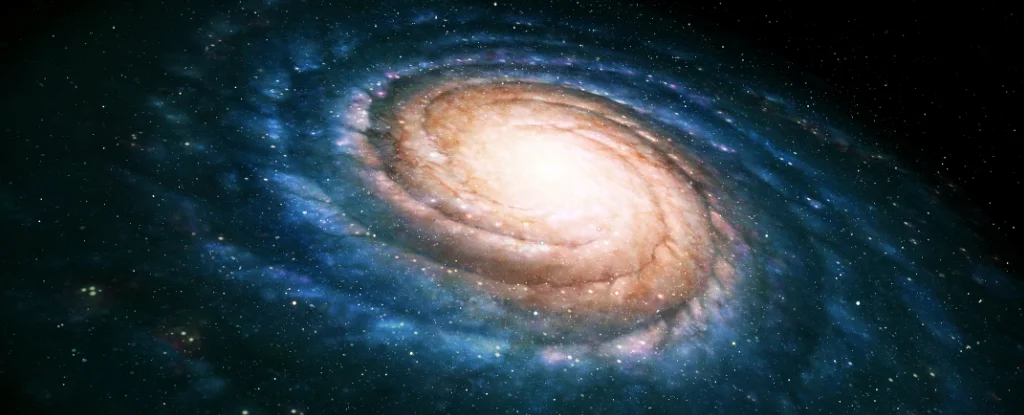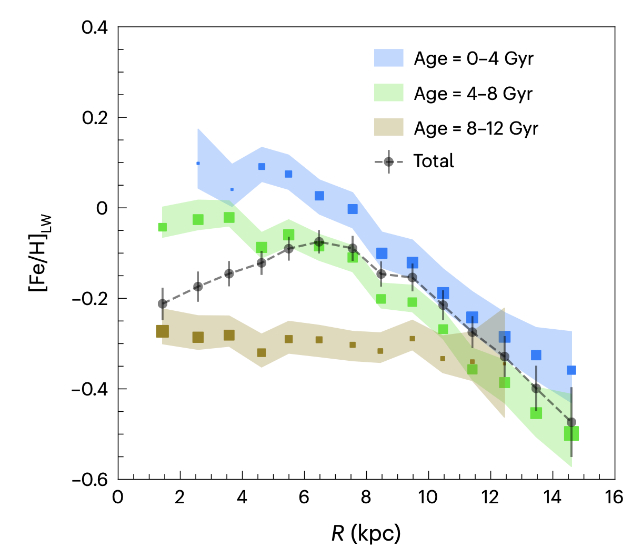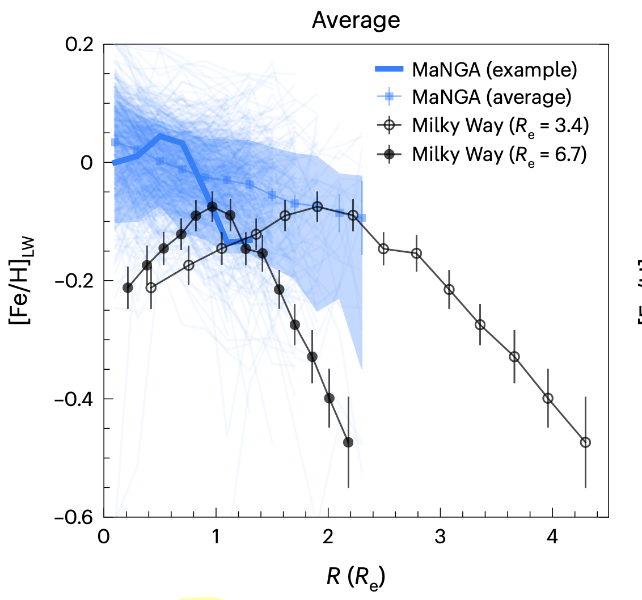What does our galaxy look like to extraterrestrial astronomers?
- July 2, 2023
- 0
Alien astronomers living in another galaxy can see the 100 billion stars of our Milky Way as a tiny speck of light in the night sky. Only if
Alien astronomers living in another galaxy can see the 100 billion stars of our Milky Way as a tiny speck of light in the night sky. Only if

Alien astronomers living in another galaxy can see the 100 billion stars of our Milky Way as a tiny speck of light in the night sky. Only if they analyze the frequencies of light in this faint spot can they decipher what our galaxy is made of.
This begs the question: What does the chemistry of the Milky Way look like millions of light-years away?
Research led by the Max Planck Institute for Astronomy in Germany and Yunnan University in China has provided an answer: Our galaxy is strange, if not unique. The Milky Way stands out among other galaxies of the same size, with very low metal concentrations at the center, rising towards the center and then disappearing at the galaxy’s edge.
By comparison, the distribution of metals in other galaxies is much flatter, more like a pancake than a donut. Researchers report that our galaxy is “not unique, nor ordinary.” “The Milky Way may not have the typical metallic distribution for a galaxy of this mass.” Astronomers use the word “metal” to refer to all elements heavier than hydrogen and helium.
About three minutes after the Big Bang, nuclei of hydrogen and helium formed, and electrons began traveling to form atoms about 380,000 years later. The heavier elements are the product of billions of years of stellar evolution, which takes longer to form. Therefore, stars born earlier in the history of the universe tend to have less metal than those born later.

The researchers compared our Milky Way to 321 galaxies of similar mass observed as part of the Mapping Nearby Galaxies survey at the Apache Point Observatory (MaNGA). They found that only one percent of these galaxies matched the Milky Way in terms of metal distribution. The researchers also compared the Milky Way to 134 galaxies created in the TNG50 universe simulation, which simulates the evolution of tens of thousands of galaxies over 13.8 billion years.
Only 11 percent of the simulated galaxies were similar to ours.

Why is our Milky Way so strange?
There are several explanations. Perhaps older stars with lower metal content have exhausted all the resources in the galactic centre. This means that several young stars were born there, which explains the collapse of the metals in the center. Also, the supermassive black hole at the center of the Milky Way may have emitted radiation as it fed, making it difficult for stars to form in the centre.
The lack of metal at the edges of the Milky Way may be due to our galaxy absorbing another galaxy with a low metal content. Another possibility is that the estimated size of the Milky Way’s stellar disk is incorrect, which will be addressed in future research such as the WHT Enhanced Area Velocity Explorer (WEAVE) and the Sloan Digital Sky Survey V (SDSS-V). aforementioned.
“If we want to know if the Milky Way is special, what we need is to find ways to compare our own galaxy with more distant galaxies,” says lead author and astronomer Jianhui Lian. “This question has been open since astronomers realized a hundred years ago that the Milky Way is not the only galaxy in the universe.” Source
Source: Port Altele
As an experienced journalist and author, Mary has been reporting on the latest news and trends for over 5 years. With a passion for uncovering the stories behind the headlines, Mary has earned a reputation as a trusted voice in the world of journalism. Her writing style is insightful, engaging and thought-provoking, as she takes a deep dive into the most pressing issues of our time.